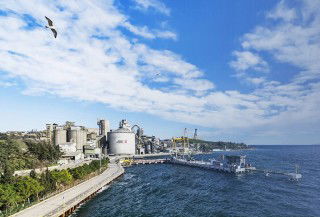This week, Zimbabwe's cement market opted to keep import permits in response to increasing cement shortages. Zimbabwe’s cement sector has been stretched and reliance on Lafarge Cement (Holcim group) and PPC, the top two domestic producers, has led to the current situation where imports have become a necessity to complete private and public building projects.
The immediate cement shortage in the country has been exacerbated by Lafarge Cement’s plant breakdown, where a roof collapsed on a cement mill. This has led the company to import from its sister cement plant in Zambia to keep its route to market open. "Lafarge still has production challenges and we will continue issuing import permits until the situation improves," said Commerce Minister, Dr Sekai Nzenza.
Therefore, the Ministry of Industry and Commerce promulgated an import substitution regulation, Statutory Instrument 89 of 2021, which was initially brought in on 2 April 2021, to regulate and control importation of cement into the country. This now remains in place to meet current cement demand.
Increasing pressure on cement prices
Pressure on cement availability has seen prices increase to US$13/50kg bag, while in neighbouring Zambia a 50kg cement bag costs around US$4.50. Cement prices in Zimbabwe began to rise sharply in September, having previously averaged US$10.50/50kg bag. The government noted that the country is an attractive import market for regional producers with excess capacity, supported by high selling prices in the market.
Infrastructure and housing demand
The steep increase in cement prices has threatened to derail construction sector growth, which has been supported by ambitious government plans to spend US$156bn on infrastructure projects. By plugging the gap with imports, it is hoped that delays to the construction of new roads, schools, hospitals and hydroelectric dams will be minimised. However, the private sector is also looking to increase housebuilding resulting in competition for limited cement supply.
The Confederation of Zimbabwe Industries reported in May that the manufacturing capacity utilisation in the country would rise to 61 per cent this year compared to 27 per cent at the end of 2020. Before the recent shortages, ministers were buoyant about the market situation. "The biggest demand is not even from the roads that we are constructing as a government. It’s coming from housing and private sector construction activities. It is amazing. Some of the diaspora remittances end up in the construction sector. We are expecting growth in 2021," a government minister added.
Future capacity
Lafarge Zimbabwe is targeting March 2022 for the start-up of its new vertical roller mill at its Manresa cement plant, which should ease the cement shortage with a capacity addition of 0.5Mta. The new mill is part of a US$15m investment plan that was initiated in 2019. The investment also included infrastructure for alternative power and a US$2.8m automated dry-mortar plant.
Current cement production capacity in the country totals around 2.7Mta. Lafarge Zimbabwe and PPC currently control 70 per cent of the domestic market. This market dominance is expected to be challenged when Dangote Group proceeds with its plan to build a 1.5Mta integrated cement works in Harare in 2023.
CMBC (Sinoma International Engineering) is also launching Sino-Zimbabwe Cement Co in Masvungo, which will have a cement capacity of 0.7Mta when the greenfield plant is on-stream in 2023. This will increase the group’s cement Zimbabwean capacity from 0.3Mta to 1Mta, building on the company’s existing capacity at Gweru. Sourcing raw materials locally has been an important strategy for the company and has made it less dependent on foreign currency. The Chinese operation's Managing Director, Wang Yong, stated in September that: “Although a heavy industrial manufacturer, about 85 per cent of our raw materials and other inputs are sourced locally. The remaining 15 per cent are imports in the form of consumables, spares and core services, which are the most critical and yet have become extremely difficult to purchase over the past two years."
PPC has recorded strong volumes in its 1H21 business results in Zimbabwe and is itself looking to generate further sales with its plans for a new 1Mta clinker line at Rushinga. This clinker plant will add to production from the Colleen Bawn site in the south, and will no doubt support the company's two grinding plants that are located at Harare and Bulawayo.
An existing market player, Livetouch Investments (Mortal Investments Manufacturing) is also attempting to boost its market share with a new 0.1Mta grinding plant at Hwange at the start of 2023.
Summary
Presently, Zimbabwe is entering a perfect storm with cement production falling short of demand while importers are benefitting from rising cement prices, and the government needs to implement its infrastructure programme while there is a boom in private housebuilding. The country could be set for another 12 months of tight cement supply, but with Lafarge's new mill starting up at the beginning of 2022 and new capacity due to come on-stream in 2023, Zimbabwe will eventually see cement prices start to ease. Until then, cement imports look to remain a feature of the market.
